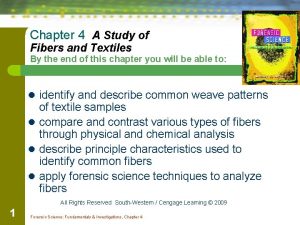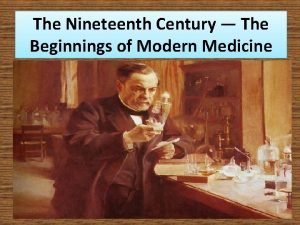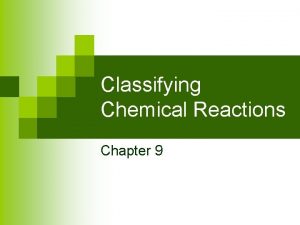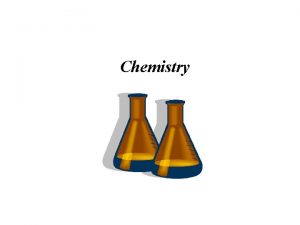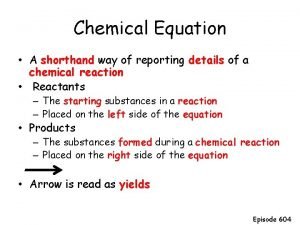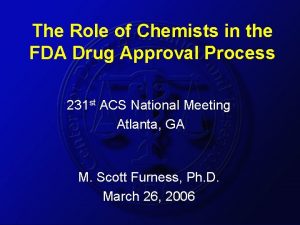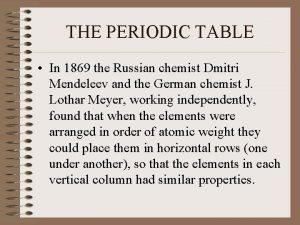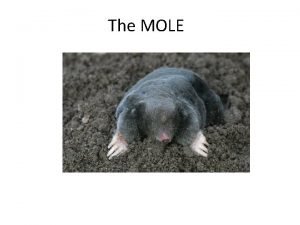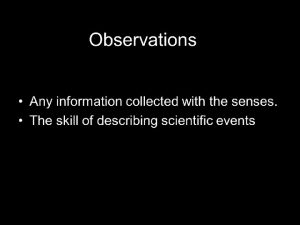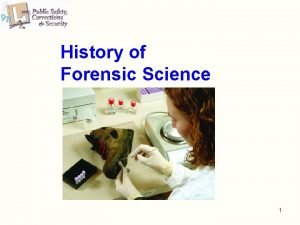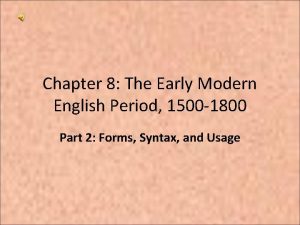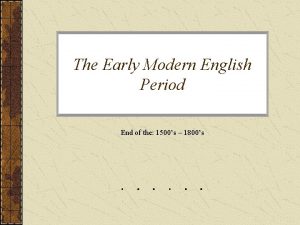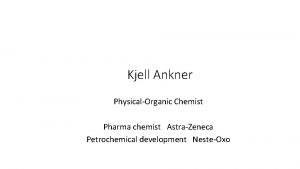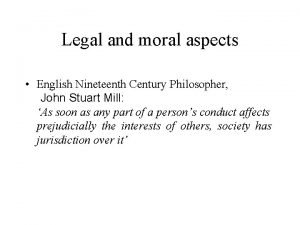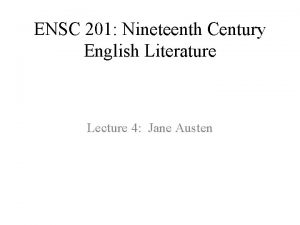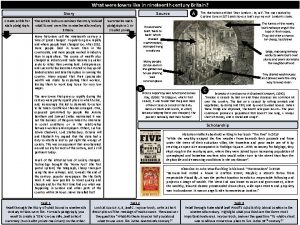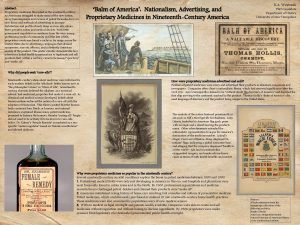In the early nineteenth century an English chemist


![DALTON'S ATOMIC THEORY [Con. ] 5. Atoms of different element differ in their mass DALTON'S ATOMIC THEORY [Con. ] 5. Atoms of different element differ in their mass](https://slidetodoc.com/presentation_image/4b9672297f1a1b1649bfec66ab779c05/image-3.jpg)
























- Slides: 27

In the early nineteenth century, an English chemist Dalton stated clearly his ideas regarding atoms. He was the first person to give out atomic theory in 1803. This theory is known as Dalton's Atomic Theory.

DALTON'S ATOMIC THEORY 1. Elements are made up of tiny particles called “atoms”. 2. Atoms are indivisible. 3. Atoms can neither be created nor destroyed. 4. Atoms of the same element are alike in their mass and chemical properties.
![DALTONS ATOMIC THEORY Con 5 Atoms of different element differ in their mass DALTON'S ATOMIC THEORY [Con. ] 5. Atoms of different element differ in their mass](https://slidetodoc.com/presentation_image/4b9672297f1a1b1649bfec66ab779c05/image-3.jpg)
DALTON'S ATOMIC THEORY [Con. ] 5. Atoms of different element differ in their mass and chemical properties. 6. Atoms of one element cannot be converted into atoms of another element 7. Atoms of different elements always combine in simple, definite and integral ratios to form compound atoms.

According to Dalton atom is the smallest, indivisible particle of an element that takes part in a chemical reaction.

1. According to Dalton , what is an atom ? 2. What are the properties of an atom according to Dalton ? 3. What are the postulates of Dalton's atomic theory ?

Cathode rays, discovery of electrons Discovered during discharge tube experiments for studying passage of electricity through gases at low pressures The credit of studying cathode rays goes to Sir. J. J. Thomson, an English physicist. A glass tube with two metallic plates.

Discharge tube ANODE One plate is connected to positive terminal of high voltage power supply CATHODE The other to negative terminal. The tube is filled with any gas. When the pressure of the gas is lowered to about 0. 01 mm of mercury and a high voltage (10000 volts) is applied, electricity begins to flow and light is emitted.

Cathode Rays If the pressure is further reduced to about 10 -4 mm of mercury, the emission of light stops , but the wall of the glass tub begins to glow with a faint greenish light. This greenish light is due to the bombardment of certain rays which are liberated at the cathode. These rays are known as "Cathode Rays"

Cathode rays: properties • Cathode rays originate from cathode. • Cathode rays travel in straight line. • Cathode rays are deflected by electric field. • Cathode rays are deflected by magnetic field. • These rays consist of material particles. • Cathode rays consist negatively charged particles called "electron".

Properties: Cathode rays 1. Cathode rays originate from cathode. 2. Cathode rays travel in straight lines. When the object is placed in the path of cathode rays shadow of the object is formed.

PROPERTIES OF CATHODE RAYS 3. Cathode rays are deflected by electric field. 4. Cathode rays are deflected by magnetic field. This shows that cathode rays are consist of charged particles.

PROPERTIES OF CATHODE RAYS 5. A paddle wheel rotates when placed in the path of cathode rays. This shows that cathode rays are consist of particles which cause mechanical motion.

Cathode rays consist negatively charged particles called "electrons". Conclusion: Electrons are negatively charged and common constituents of atoms of all elements.

TEST FOR YOU FILL IN THE BLANKS. • Cathode rays travel in_____ lines. • Cathode rays are discovered by ______. • Cathode rays are consists of ______charged particles. • In an atom negatively charged particles are called _____.

ANODE RAYS , DISCOVERY OF PROTONS In 1886, Goldstein did experiments with discharge tubes containing a perforated cathode, shows that some rays are moving in the opposite direction of the cathode rays. These rays are called as 'anode rays'.

Properties of Anode rays • Anode rays travel in straight line in the opposite direction of cathode rays. • Anode are made up of positively charged particles. • Rutherford named these positively charged particles are protons. Conclusion: Protons are positively charged, and common constituents of atoms of all elements.

RUTHERFORDS ALPHA RAY SCATTERING Around 1911, E. Ruther ford and his students performed a series of experiments using alpha rays. A powerful beam of alpha particles from a radioactive source is made to strike a gold foil. In order to examine the alpha particles zinc sulphide screen is used. When an alpha particle strikes the zinc sulphide screen a flash of light is seen.

OBSERVATIONS OF ALPHA RAYS SCATERING EXPERMINT 1. Most of the a-particles passed through the metal foil with out any change in their path. 2. A few of the a-particles were deflected through small angles. 3. A very small number of the a -particles were deflected through such large angles that they almost retraced their original path.

RUTHERFORD'S MODEL OF ATOM Rutherford proposed what is known as ‘the nuclear model of the atom’. According to this model An atom has a central nucleus surrounded by electrons. Electrons are far away from the nucleus. The central nucleus is positively charged

RUTHERFORD'S MODEL OF ATOM • Total number of positive charges on the nucleus is equal to the number of electrons. • Almost the entire mass of the atom is concentrated in the nucleus. • The volume of the nucleus is very small compared to the volume of the atom. • Electrons are not stationary. They revolve round the nucleus at extremely high speed.

Name the following 1. Positively charged particle in an Atom. 2. Central part of the Atom. 3. Anode rays experiment was conducted by. 4. Electrons are faraway from. 5. Electric charge of the nucleus.

DISCOVERY OF NEUTRONS In 1932, James Chadwick discovered that when a thin sheet of beryllium or boron is bombarded by the alpha particles, neutrons are emitted. The neutrons have almost the same mass as that as

• Thus protons, electrons and neutrons are the fundamental particles of an atom. Proto n • Protons are positively charged. • Electrons are negatively charged. • Neutrons are electrically neutral. Neut on

Atom of potassium Atomic number-The number of unit positive charges carried by the nucleus of an element is called Atomic number of the element. Atomic no. of an element =No. of unit positive charges in the nucleus =No. of protons present in the nucleus =No. of electrons present out side the nucleus. Electrons 19 Protons 19 Neutrons 20 Atomic number of potassium is 19

Atomic Mass: - Atomic mass of an element is numerically equal to the sum of the number of protons and the neutrons present in the nucleus. Atomic mass= No. of protons+ No. of neutrons.

RUTHERFORD-BOHR MODEL OF ATOM • Electrons revolve around the nucleus in definite orbits. These are called Stationary states. • Each stationary state is associated with a definite quantity of energy. Hence these stationary states are also called Energy levels. • As long as electrons are moving in these stationary states , they do not lose or gain energy. • Energy is lost or gained by an electron whenever it jumps from one energy level to another.

Answer the followings. 1. Name the fundamental particles of an atom. 2. What is an atomic mass? 3. What is atomic number? 4. What are neutrons? 5. Name the particles present in the nucleus.
 Pretest the early and mid-nineteenth century romanticism
Pretest the early and mid-nineteenth century romanticism Conservatism
Conservatism What is a textile in forensic science
What is a textile in forensic science Nineteenth century
Nineteenth century Horace taylor the verdict september 25 1899
Horace taylor the verdict september 25 1899 Unit 6 early 20th century ga
Unit 6 early 20th century ga Early cpr and early defibrillation can: *
Early cpr and early defibrillation can: * Joanne supervised 36 professionals in 6 city libraries
Joanne supervised 36 professionals in 6 city libraries A chemists shorthand way of representing chemical reaction.
A chemists shorthand way of representing chemical reaction. Chemist and alchemist
Chemist and alchemist A chemist shorthand way of representing chemical reaction.
A chemist shorthand way of representing chemical reaction. Shorthand way of representing chemical reaction
Shorthand way of representing chemical reaction Fda chemist
Fda chemist Russian chemist periodic table
Russian chemist periodic table Representative particle
Representative particle Carl wilhelm scheele forensics
Carl wilhelm scheele forensics Office of texas state chemist
Office of texas state chemist Valentin ross forensics
Valentin ross forensics A chemist in an imaginary universe
A chemist in an imaginary universe Ttb certified chemist
Ttb certified chemist Aerospace propulsion salary
Aerospace propulsion salary A chemist performs the same tests on two
A chemist performs the same tests on two Wild swans at coole questions
Wild swans at coole questions Early modern english syntax
Early modern english syntax Early modern english
Early modern english Gary ives west yorkshire study
Gary ives west yorkshire study Early modern english period
Early modern english period Modern english time period
Modern english time period


